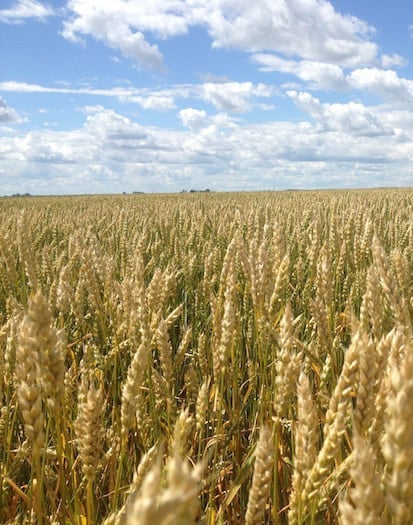Farm press stories about the impending renegotiation of NAFTA have put Supply Management in the spotlight in recent weeks. We’ve heard much less about the USA’s goal to have Canada change its grain grading system in conjunction with these trade deal renegotiations.
Under the Obama administration, the United States Trade Representative (USTR) identified Canada’s grain grading system as a trade concern. In March 2017, the USTR’s yearly report on Foreign Trade Barriers targeted the Canada Grains Act and the Seeds Act, saying the USA will continue to press the Canadian government to change these laws, as well as our varietal registration system, to enable US‐grown grain to be graded and handled by our system as if it were Canadian grain.
On April 25, 2017 Montana Senator John Tester moved a resolution calling for changes to Canada’s wheat grading practices. The two largest American wheat lobby groups, the National Association of Wheat Growers and US Wheat Associates, have also called on their government to push Canada to treat US wheat the same as Canadian‐grown wheat in order to increase US exports into Canada. US Wheat Associates wants US‐grown wheat to get full access to Canada’s elevators and transportation system by ending our segregation of US‐grown wheat. Canada’s federal lobby registry indicates that US Wheat Associates’ has met with the CGC to ask for amendments to the Canada Grains Act respecting the classification of wheat.
Currently, US-grown grain can be sold in Canada to Canadian purchasers based on contract specifications. In our commodity handling system, any grain grown outside of Canada must be identified as “foreign grain” and is assigned the lowest grade. Any export shipments containing US‐grown grain must be labelled as mixed Canadian and foreign grain. As a result, grain companies segregate US‐ grown wheat from Canadian wheat within our grain handling system.
Canada is one of the world’s top exporters of wheat. Even so, we have consistently imported small quantities of wheat, most of it from the USA. The dotted line along the bottom of Graph #1 shows Canada’s total wheat imports. They barely register when compared with our exports. Thus, it is not our grain grading system that limits the expansion of US wheat exports to Canada, but the fact that there is very little demand for imported wheat. Canadian farmers produce much more wheat than our population can consume.
The stated desire to expand the volume of US wheat exports into Canada is not a believable reason for demands to gain access to our grading system. However, it would benefit the multinational grain companies that support the US wheat lobby to dismantle our CGC grading system and instead have all wheat sold on specifications instead of by class and grade. The differentiation between Canadian and US wheat would disappear, allowing the grain companies to source wheat anywhere by price alone and make their money on volume of sales instead of price for quality.
Eliminating the CGC grading system would simplify grain company transactions, reduce costs and increase profits for these companies at the expense of farmers and consumers.
The Canadian Grain Commission’s authority to manage and enforce the grain grading system provides an effective and necessary counter‐balance that protects farmers’ interests in the face of the overwhelming market power that grain companies wield. US‐based ADM, Bunge, Cargill and Louis‐Dreyfus control over 70% of the global grain trade, while the Swiss company, Glencore Xtrata that owns Viterra, and the Chinese giant, Cofco, are major players in the remaining 30% of the market. In the coming months, we are will likely need to call upon our government to safeguard both our grain grading system and supply management as the NAFTA renegotiation process unfolds.
